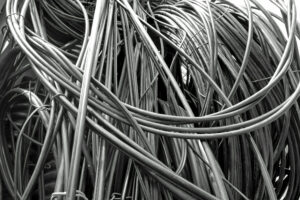 Nowadays researchers from California are planning to use “dark fiber optic cables”, i.e. unused fiber cables, for underground monitoring of sound waves or signals came from earthquakes. It should be noted that today millions of fiber optic cable miles remain unused underground in spite of the fact that they have numerous applications.
Nowadays researchers from California are planning to use “dark fiber optic cables”, i.e. unused fiber cables, for underground monitoring of sound waves or signals came from earthquakes. It should be noted that today millions of fiber optic cable miles remain unused underground in spite of the fact that they have numerous applications.
Thus, the researchers have developed a new technique of fiber optic underground monitoring that allows higher-resolution measurements of the Earth’s crust movement than the seismic detector networks could offer at the present time. Herewith, in traditional seismology the number of optical sensors for earthquake detection is limited but this technology makes each couple of meters a separate sensor.
Also, today’s problem is the measurement of the Earth’s surface vibrations because, in some seismically active places, there are a lot of fiber optic sensors while the areas that are far from tectonic plates have only a few. That is why it remains difficult to take measurements in places with fracking-induced earthquakes.
The new technique is based on distributed acoustic sensing that includes laser pulses with the aim of vibration detection along with the fiber. Moreover, the researchers use FBG interrogators that are placed along the fibers that transmit and detect short infrared laser signals.
The principle of the interrogator operation includes the detection of tiny strains caused by seismic activity on the fiber, then they force the laser light to reflect and bounce back to the fiber sensor. Thus, the researchers are able to determine light changes scattering over time by analyzing the rapid pulses, and this information shows where the seismic activity occurred.
The technology of distributed acoustic sensing was tested in real-world conditions and enable to extract information about the speed of waves traveling through the Earth’s surface. Moreover, the researchers succeeded in the earthquake measurement that happened in Mexico due to the distributed acoustic method and used fiber optic cables.
The potential application of DAS technology is the determination of groundwater location, nevertheless, the tests were not successful although the researchers could measure passing trucks and trains. Unfortunately, this experimental method is not ready for application beyond research yet because there are a lot of limitations. For example, now a single sensing location along the line is less sensitive than a single seismometer and is able to measure the fiber strain only in one direction. The second problem of fiber optic cables is a huge amount of data that are difficult to manage, store, and organize. Herewith, the new DAS technique cannot be used yet on underwater lines.
Optromix is a fast-growing vendor of fiber Bragg grating (FBG) products line such as fiber Bragg grating sensors, FBG interrogators and multiplexers, Distributed Acoustic Sensing (DAS) systems, Distributed Temperature Sensing (DTS)systems. The company creates and supplies a broad variety of fiber optic solutions for monitoring worldwide. If you are interested in acoustic measurement systems and want to learn more, please contact us at info@optromix.com

